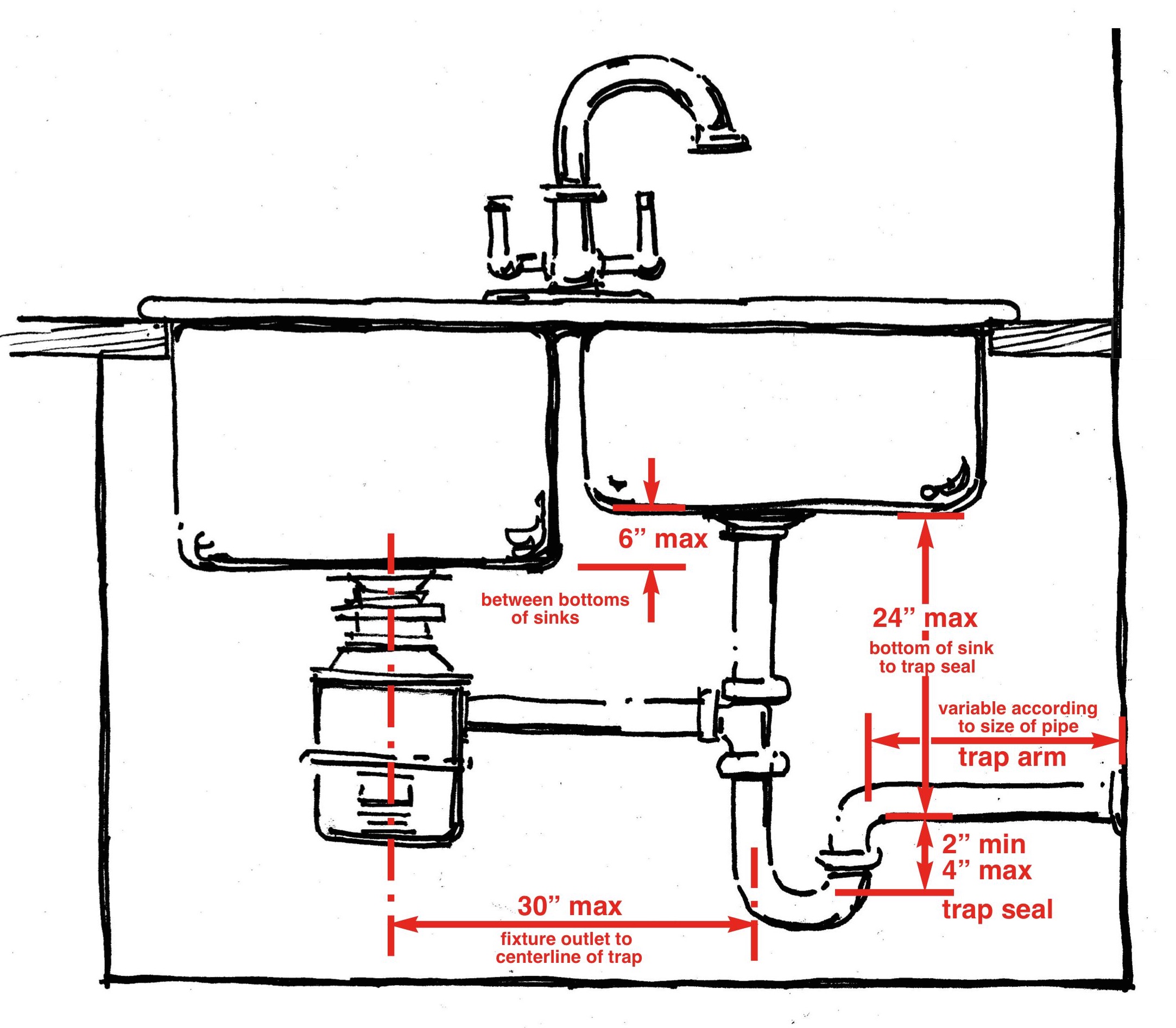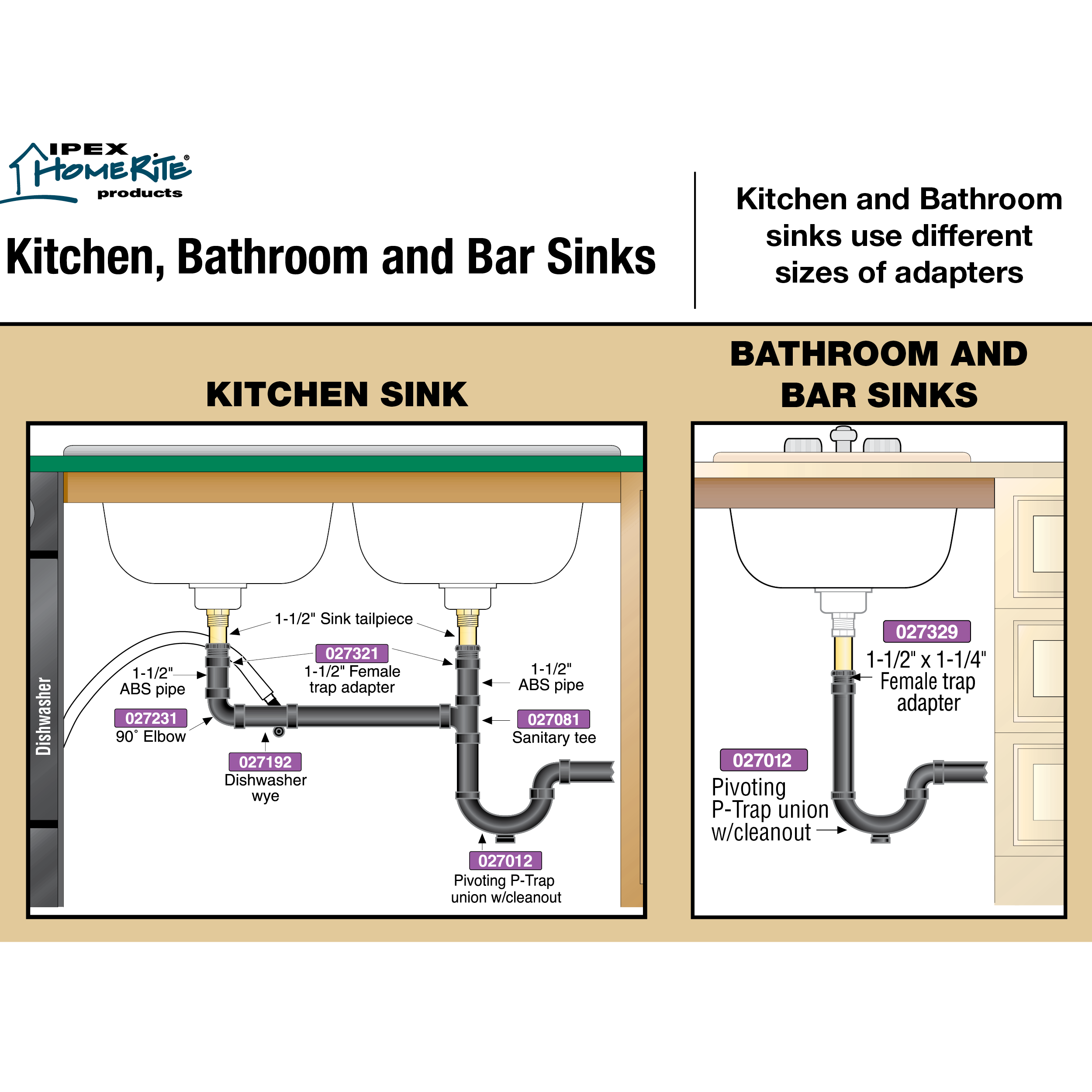Types of Bathroom Sink Drain Pipes

Bathroom sink drain pipe size – Bathroom sink drain pipes play a crucial role in ensuring proper drainage of water from the sink. These pipes are available in various materials, each with its unique advantages and disadvantages. Understanding the different types of bathroom sink drain pipes can help you make an informed decision when choosing the best option for your bathroom.
PVC (Polyvinyl Chloride), Bathroom sink drain pipe size
PVC pipes are a popular choice for bathroom sink drain pipes due to their affordability, durability, and ease of installation. They are made from a lightweight and flexible material that is resistant to corrosion and chemicals. PVC pipes are also available in a wide range of sizes and can be easily cut and fitted using a hacksaw.
ABS (Acrylonitrile Butadiene Styrene)
ABS pipes are another common type of bathroom sink drain pipe. They are similar to PVC pipes in terms of durability and ease of installation. However, ABS pipes are more resistant to heat and impact, making them a good choice for areas where there is a risk of hot water or accidental damage. ABS pipes are also available in a variety of sizes and can be easily cut and fitted using a hacksaw.
When it comes to bathroom sink drain pipe size, it’s crucial to consider the type of faucet you have. Understanding the different parts of a bathroom sink faucet, which you can find in the comprehensive bathroom sink faucet parts diagram , will help you determine the appropriate drain pipe size.
This ensures a seamless connection and optimal functionality of your bathroom sink.
PEX (Cross-linked Polyethylene)
PEX pipes are a newer type of bathroom sink drain pipe that is gaining popularity due to its flexibility and ease of installation. PEX pipes are made from a flexible plastic material that can be easily bent and shaped to fit around obstacles. They are also resistant to corrosion and chemicals, making them a good choice for long-term use.
To ensure proper drainage, the bathroom sink drain pipe size must align with the rough-in measurements. Bathroom sink rough in refers to the placement and alignment of the drain pipe and water supply lines before the sink is installed. Matching the drain pipe size to the rough-in ensures a secure connection and prevents leaks.
Therefore, it’s crucial to consider both the drain pipe size and rough-in dimensions when planning your bathroom sink installation.
Comparison of Bathroom Sink Drain Pipe Types
The following table compares the key features of the three most common types of bathroom sink drain pipes:
| Feature | PVC | ABS | PEX |
|---|---|---|---|
| Material | Polyvinyl Chloride | Acrylonitrile Butadiene Styrene | Cross-linked Polyethylene |
| Durability | Good | Good | Good |
| Resistance to Heat | Low | High | High |
| Resistance to Impact | Low | High | Low |
| Ease of Installation | Easy | Easy | Very Easy |
| Cost | Affordable | Affordable | Slightly More Expensive |
Determining the Correct Drain Pipe Size: Bathroom Sink Drain Pipe Size

Selecting the appropriate drain pipe size for a bathroom sink is crucial to ensure efficient drainage and prevent clogs. Several factors influence the optimal drain pipe size, including the type of sink, flow rate, and drainpipe length.
Calculating the Required Drain Pipe Diameter
The required drain pipe diameter can be calculated using the following formula:
D = 1.25 * (Q / V)^0.5
Where:
- D = Drain pipe diameter (inches)
- Q = Flow rate (gallons per minute)
- V = Velocity of water flow (feet per second)
The flow rate can be estimated based on the type of sink:
- Standard bathroom sink: 2-3 gallons per minute
- Pedestal sink: 1-2 gallons per minute
- Vessel sink: 1-2 gallons per minute
The velocity of water flow is typically 2-3 feet per second for bathroom sinks.
Best Practices for Choosing the Correct Drain Pipe Size
It is essential to choose a drain pipe size that is neither too large nor too small. A pipe that is too large can lead to slow drainage, while a pipe that is too small can cause clogs.
Here are some best practices to consider:
- For standard bathroom sinks, a 1.5-inch diameter drain pipe is usually sufficient.
- For pedestal sinks, a 1.25-inch diameter drain pipe may be adequate.
- For vessel sinks, a 1-inch diameter drain pipe may be suitable.
- If the drainpipe length is over 4 feet, consider increasing the drain pipe diameter by one size.
Installation and Maintenance of Bathroom Sink Drain Pipes

Installing and maintaining bathroom sink drain pipes is a crucial aspect of plumbing that ensures proper drainage and prevents leaks and clogs. Here’s a comprehensive guide to help you with the process:
Materials and Tools
Before starting the installation, gather the necessary materials and tools:
- Bathroom sink drain pipe
- Slip joint nuts
- Washers
- Plumber’s putty
- Adjustable wrench
- Channel-type pliers
- Putty knife
Installation Steps
Follow these steps for a successful installation:
- Remove the old drain pipe if necessary.
- Apply plumber’s putty to the base of the new drain pipe.
- Insert the drain pipe into the sink drain hole.
- Secure the drain pipe with slip joint nuts and washers.
- Tighten the nuts with an adjustable wrench.
- Connect the drain pipe to the P-trap using channel-type pliers.
Maintenance Tips
Regular maintenance helps prevent problems and extends the lifespan of the drain pipes:
- Clean the drainpipe regularly to remove hair, soap scum, and other debris.
- Use a drain cleaner occasionally to dissolve clogs.
- Inspect the drainpipe and connections for leaks and damage.
- Tighten loose connections as needed.
- Replace the drainpipe if it becomes damaged or clogged beyond repair.